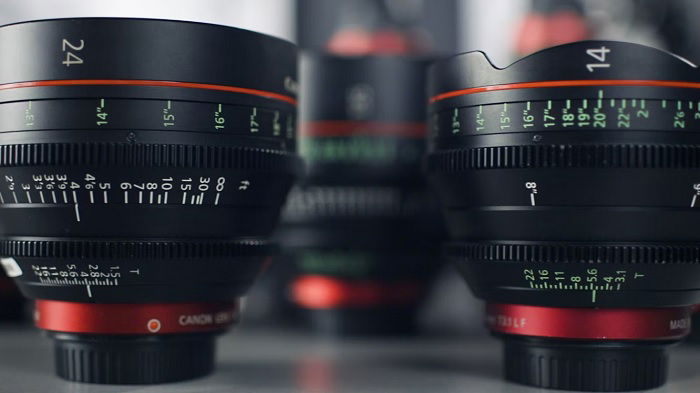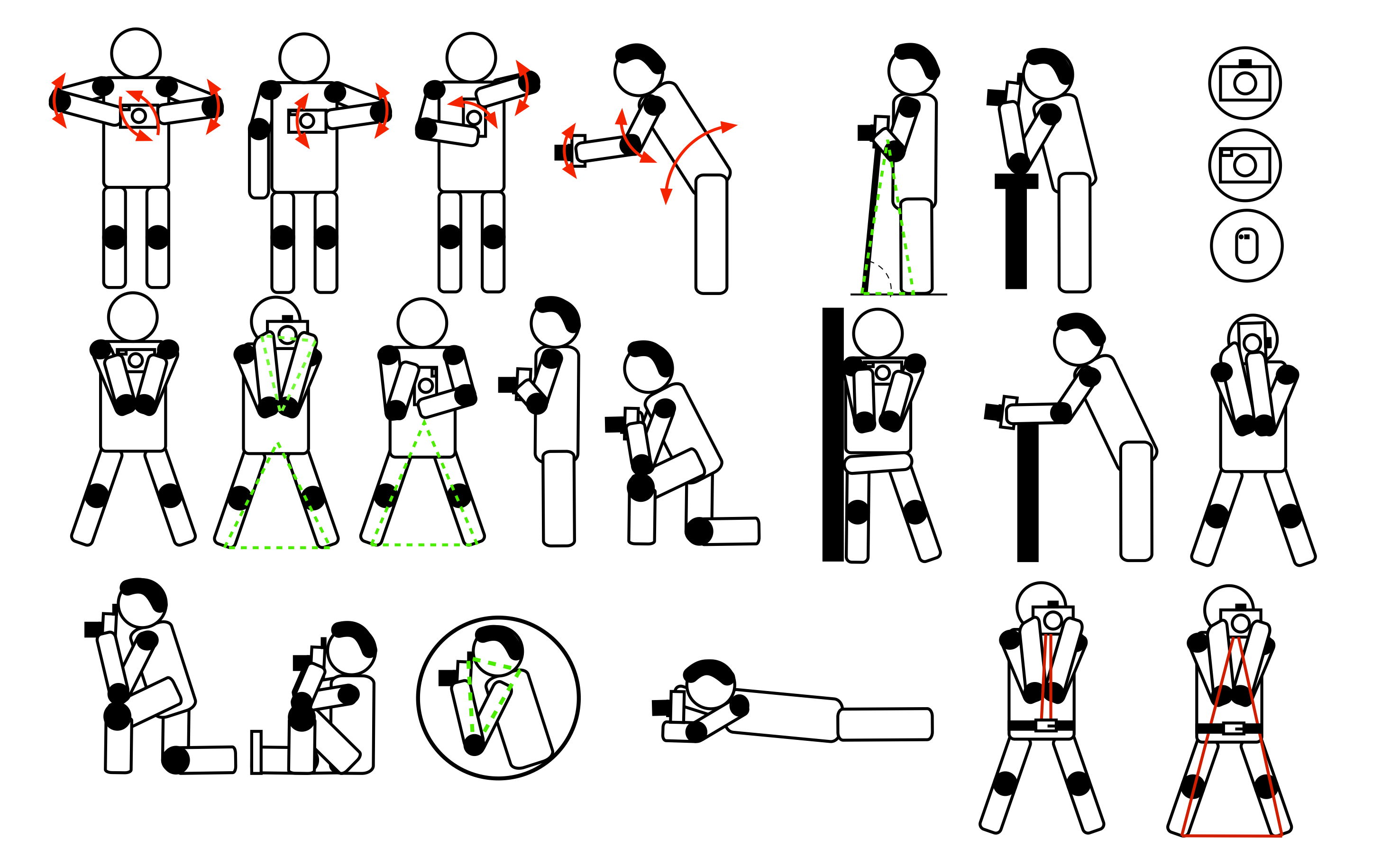Even if you’re new to photography, you’ve probably hear of f-stops. But we also have t-stops for photography and videography. But what are t-stops? And what is the difference between f-stops and t-stops?
In this article, we’ll explain everything you need to know about t-stops and how to use them. We’ll examine their purpose and why they are and are not important. Keep reading to learn all about the t-stop to f-stop calculator.
Quite simply, the f-stop refers to the size of the aperture of your lens and t-stop refers to the actual amount of light that reaches the sensor.
The f-stop scale is always used with photography lenses. But lenses for videography and cinema are often marked with the t-stop value, not the f-stop.
Let’s look at f-stops and t-stops in more detail.
The f-stop signifies the size of the aperture of your lens. Modern camera lenses have variable apertures, which means you can change the f-stop to make the aperture bigger or smaller.
All camera and lens manufacturers use the same f-stop scale for all their lenses. That means the f-stops on a Canon lens have the same as on a Sony lens.
This might be confusing at first, but small f-stop numbers denote wide apertures and large f-stops denote narrow apertures. For example, f/1.8 is a wide aperture that lets in lots of light. An f-stop of f/11 is a narrow aperture that lets in less light.
You can see the general f-stop scale and how it relates to aperture in the infographic below.
But an f-stop does not tell you the actual size of the lens aperture. Rather, the f-stop is a ratio of the lens’s focal length and the diameter of the entrance pupil.
The entrance pupil is the part of the lens in which the adjustable aperture is located. It is not the lens’s front opening, as it would be with a telescope. The entrance pupil is usually smaller than the front element.
So, if your focal length is 50mm and the diameter is 25mm, you’ve got an f/2 lens. This means the lens’s widest aperture, or the maximum f-stop, is f/2.
However, this is not the whole story of lenses and light transmission. Other factors affect the amount of light that actually makes it to the sensor after passing through the lens.
These factors include the number of glass elements within the lens and the quality of glass used for each element. Each element, even the very best, reflects some light away. This means not all the light that enters the lens reaches the camera sensor.
This is where we need the t-stop measurement.

The t-stop value tells us how much light actually gets to the camera sensor. It gives us an accurate reading of light transmission after all light loss has been taken into account.
For example, if a lens has a max aperture of f/1.8 but a t-stop value of t/2, it means the lens has lost f/.02 of light.
You can calculate the t-stop by dividing the f-stop by the square root of light transmittance. So, let’s suppose we have a lens with a maximum aperture of 2.8, and 90% of the light goes through.
We divide 2.8 by √0.90. The resulting value is 2.953, which we can round up to T/3.0.
But how can we work out the exact level of light transmittance? Unfortunately, this is where things get really tricky.
There is no formula that tells us the exact transmittance of a lens. If we want to know the precise amount of light getting through, we have to measure it.
This isn’t something the average amateur photographer can do at home. It’s a meticulous process, requiring a lot of testing and investment.
Some studios do offer light transmission testing themselves, but it’s generally not 100% accurate. It will also cost you a few bob.
Thankfully, the DXOmark’s database is a fantastic resource if you want to check the f-stop/t-stop value of any specific lens. It’s the best resource for t-stop values online. The only problem is that they don’t have info on every single lens out there.
As discussed, calculating the exact level of light transmittance can be tough. But it’s still possible to hazard a guess if you know a bit about your lens.
The main thing you need to think about is the number of glass elements in your lens. Even high-quality elements cause some reflection. This means the more elements a lens has, the more light is lost.
For this reason, prime lenses have a better level of light transmission than zoom lenses. Primes have fewer elements in the barrel, so the f-stop and t-stop values are much closer together.
But for zoom lenses, which have more elements, light transmission is impaired, and the difference between the f-stop and t-stop values is greater.
The elements of a zoom lens are often more spherical than those found in a prime lens. Spherical lenses tend to reflect light outward, which again reduces light transmission.
Lens quality also plays a part in overall light transmission. Cheap lenses suffer more from reflections and other impurities, resulting in a lower level of light transmission.
Professional-grade lenses have better optical quality and therefore better light transmission. The problem is that they are more expensive.
There are exceptions, of course. For example, Rokinon’s manual focus lenses are not only of very high quality, but they even have their cinema lens counterparts.
We use t-stops to tell us the true level of light transmission from a lens. However, there are several reasons you don’t often hear about t-stops in everyday photography.
One reason is that it is expensive to measure accurately. So, companies don’t even test their cheaper lenses for transmittance.
Another reason is that in photography, f-stops are more practical. Today, every digital camera has built-in metering and high ISO performance. So you hardly notice the difference between a t/3.2 and t/2.9 lens (if both f/2.8), because your camera corrects for that.
Also, it would make lenses look bad if it said f/2 and t/2.3 on the lens. People would know that the lens quality wasn’t up to scratch. It would be an admission that the lens’s light transmission is poor.
One more reason is that, in most cases, the difference is negligible. For casual photographers, a discrepancy of 0.2 or 0.3 between their max f-stop and the t-stop value won’t make much difference. It only becomes important at the very professional end of the market.
The t-stop value is far more important in videography and cinema production.

When you are always switching angles, it is crucial to avoid exposure differences between them. The easiest way to achieve this is by using lenses with the same T-stop.
Cinema lenses are marked with their t-stop instead of an f-stop. Cinema lens lines also share the same casing and weight.
This feature makes balancing and fitting accessories on them easier for cinematographers. Also, they feature pullable focusing and zoom rings.
The optics inside these cinema lenses do not differ much from photography lenses. Take a look at Canon’s 50mm f/1.2 and 50mm t1.3 lenses – they have very similar optics in two different barrels.

F-stops relate to the size of the aperture, while t-stops tell us the actual level of light transmission of your lens. But while most lenses will show a discrepancy between its max f-stop and t-stop values, this isn’t a big deal for most photographers.
T-stops are only important if you’re a professional photographer, videographer, or cinematographer. This is because they need to have the exact same exposure when changing lenses. But the average photographer can live happily using the standard f-stop scale.

